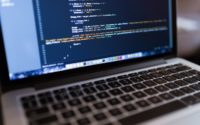How To Monitor All User Activities In Your Team: Tips and Tricks
It is essential to keep track of all user activities in any business. This is especially true for companies with remote teams. If you’re unsure how to monitor all user activities in your team, don’t worry – we have some tips and tricks for you! This blog post will discuss the best ways to keep track of everything your employees do online, as in an identity management system. We’ll also provide helpful tools to make the process easier for you!
Why Monitoring User Activity Is Important
In any team or workplace, it is crucial to monitor the activities of all users to ensure a cohesive and productive environment. By tracking the actions of individual team members, you can identify areas where someone might be veering off course or not meeting expectations. This information can then provide targeted coaching or feedback, ensuring everyone remains on track.
Additionally, monitoring user activity can also help to identify potential security risks. If an unauthorized user is detected trying to access sensitive data, steps can be taken to mitigate the risk and protect your team’s information. In summary, monitoring user activity is essential for maintaining a productive and safe work environment.
Using The Right Monitoring Tools
User activity monitoring is a critical part of any organization’s security posture. Several tools and techniques can be used for this purpose, and the most effective approach will vary depending on the organization’s specific needs.
One common technique is to install a logging agent on each user’s computer. This agent will track all activity on the machine, including file access, website visits, and application usage. The data collected by the agent can then be centrally monitored and analyzed for signs of suspicious activity.
Tips For Getting Started
When implementing UAM, it’s essential to start by clearly defining the program’s goals. What business objectives do you hope to achieve by monitoring employee activity? Once you understand your goals well, you can start developing criteria for what should be observed.
For example, if you’re interested in improving workflows, you might want to track which applications are being used most frequently or which tasks take the longest to complete. On the other hand, if you’re concerned about security risks, you might want to focus on activities that involve accessing sensitive data or connecting to external networks.
Benefits Of User Monitoring
There are many benefits to monitoring user activities on a computer network. For one, it can help prevent unauthorized access or usage of sensitive data. By tracking user activity, administrators can quickly identify and respond to potential security breaches.
Additionally, monitoring user activity can help optimize network performance by identifying and addressing bottlenecks. Furthermore, it can be helpful for troubleshooting issues or providing customer support. In short, monitoring user activity can offer numerous benefits to administrators and users.
When Something Goes Wrong
When you find something wrong with user monitoring, you should first check the logs to see if there is any evidence of tampering. If you suspect someone has been tampering with the records, you should immediately report it to your supervisor. Once you have determined that there is no evidence of tampering, you should try to replicate the problem in a test environment.
This will help you isolate the cause of the problem and determine the best way to fix it. If you cannot replicate the problem, you should reach out to the user who reported the issue and ask for more information. With this information, you should be able to narrow down the cause of the problem and find a solution.
Final Thoughts
Monitoring user activity is a critical part of any organization’s security posture. You can quickly identify and respond to potential security breaches by tracking user activity. Additionally, monitoring user activity can help optimize network performance by using an identity management system and addressing bottlenecks.

